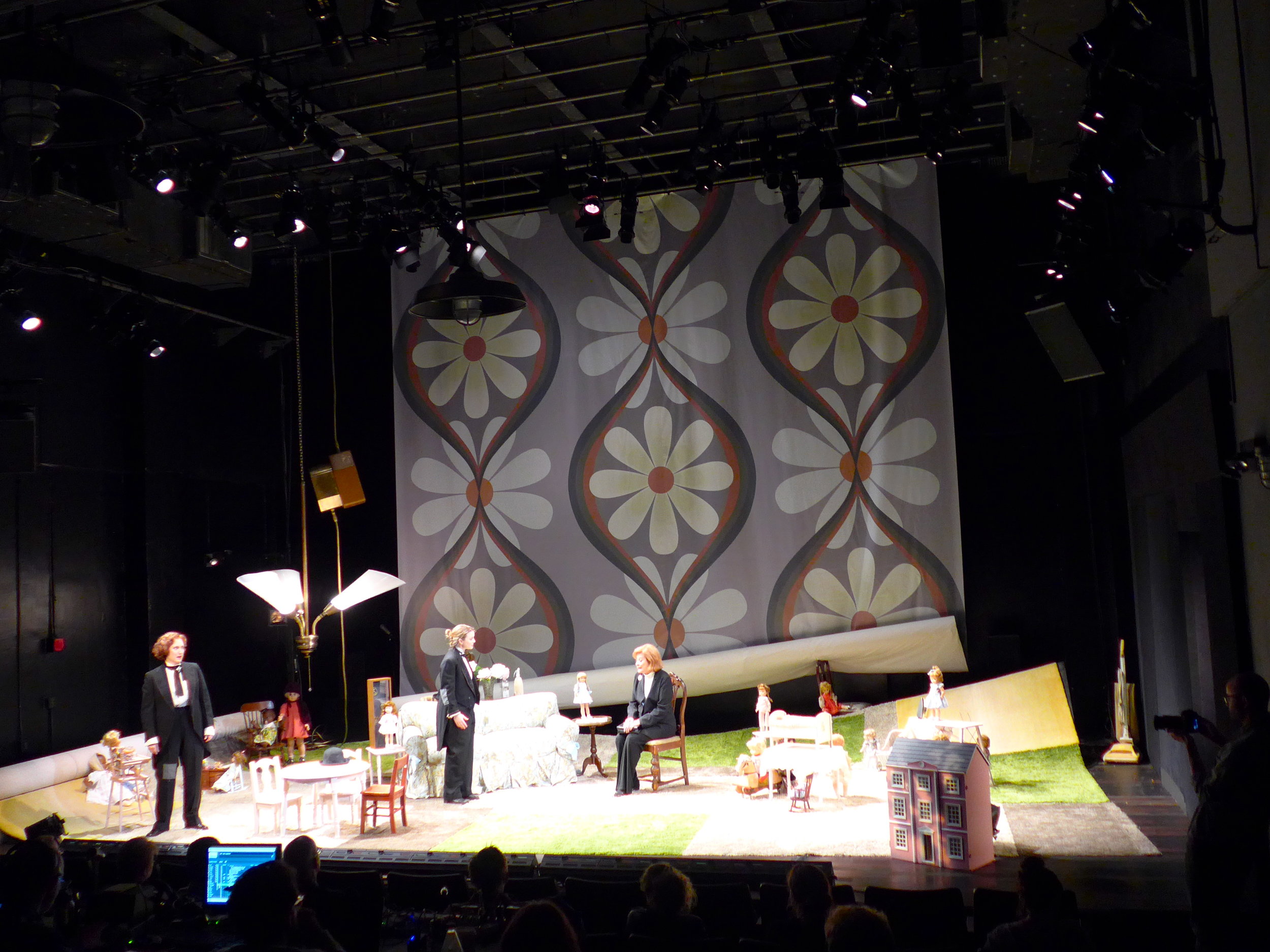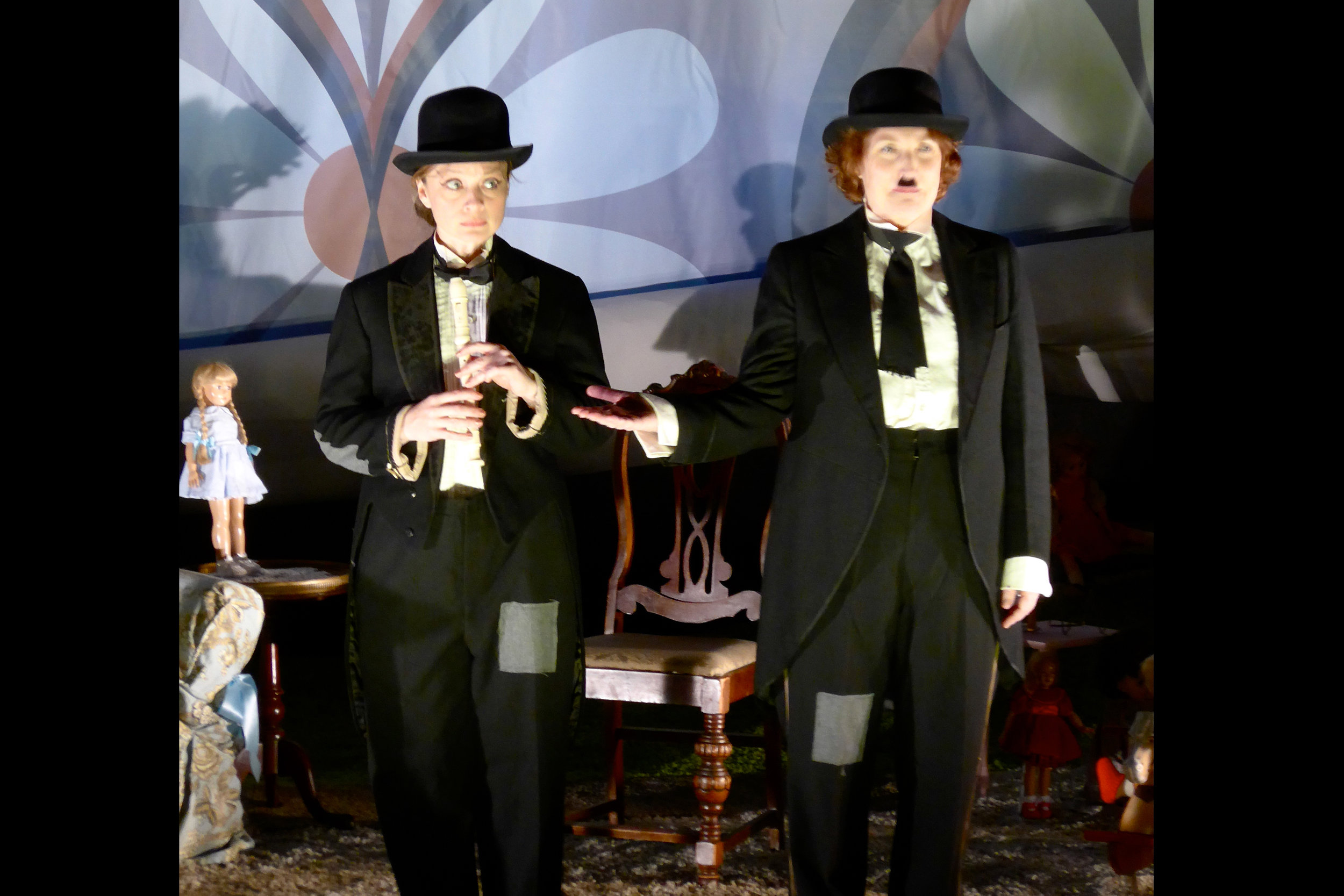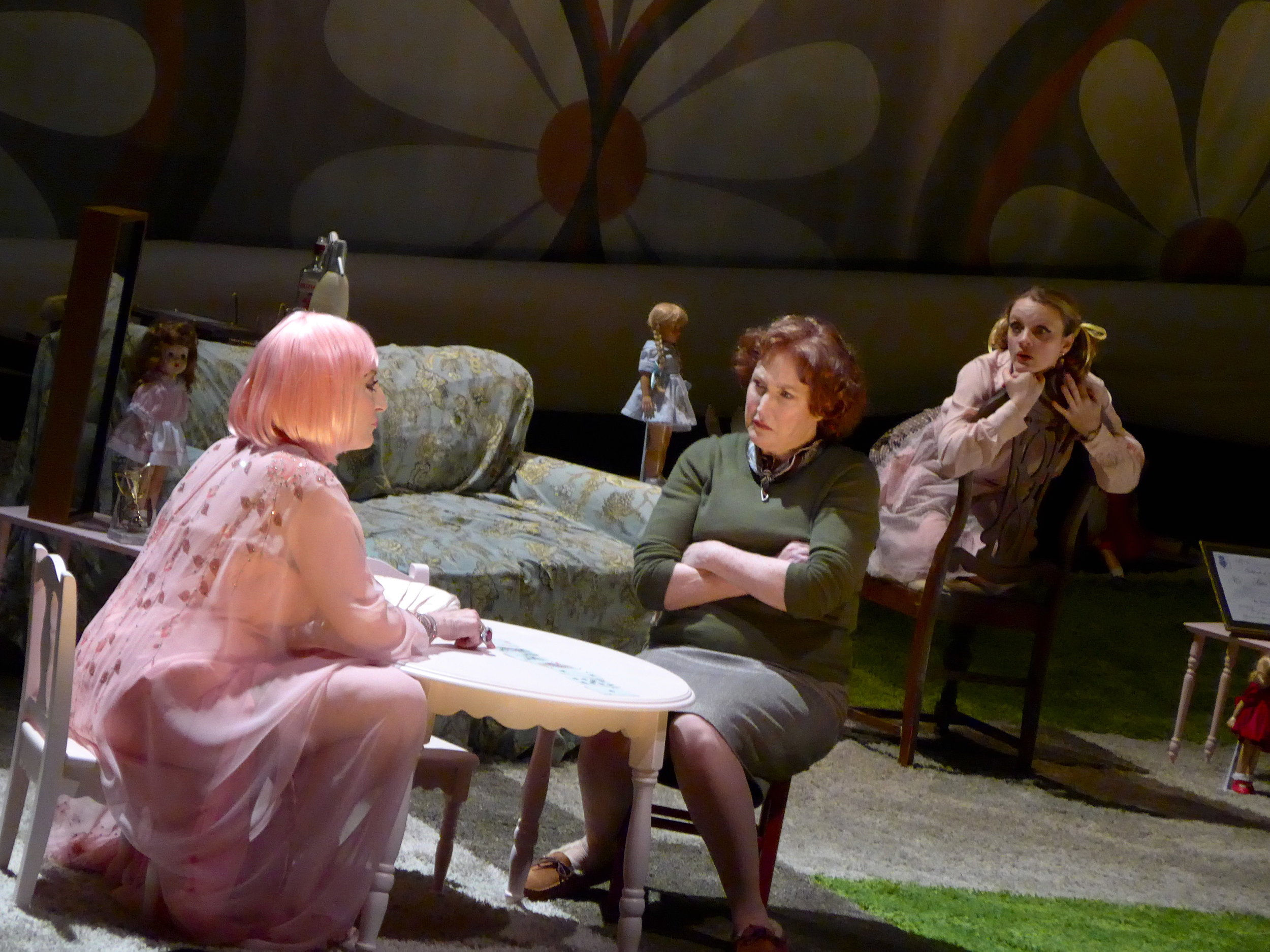THE KILLING OF SISTER GEORGE
Set Design: Narelle Sissons | Lighting Design: Mary Louise Geiger
Costume Design: Narelle Sissons | Sound Design: Daniel Kluger
Scroll down to read Drew's director's note for The Killing of Sister George for TACT in New York City.
The Killing of Sister George: "A Very Unpleasant Subject" | Director's Note
In a 1971 essay for The London Magazine entitled, “The Comedy is Finished,” Frank Marcus wrote:
A work of art, especially a piece of theatre, is not immutable. It is ephemeral, and it is affected by the passage of time. What is tragedy to one generation can be farce to the next...In the case of plays, this means in practice periodic revivals. Most plays are shown, forgotten, and discarded...and the plays chosen for revival may sometimes seem arbitrary. I believe, however, that the one quality which makes revival possible—although by no means inevitable—is not ingenuity, literary distinction, or high-mindedness, but passion. Alternatively, if it is peculiarly characteristic of its time, it may, after a considerable lapse, be revived as a period piece. In the latter category, comedy has a great advantage over tragedy.
Six years earlier, Marcus had written one of the West End’s best-reviewed, most commercially successful, and most talked-about plays of 1965. The Killing of Sister George ran for 18 months at the Duke of York’s Theatre, winning the Evening Standard’s Best Play Award (in a tie with John Osborne’s A Patriot for Me). It also catapulted Marcus, for a brief time, into the ranks of contemporary Britain’s hottest playwrights, alongside Osborne, Edward Bond, Harold Pinter, and Joe Orton. After years of toiling as an actor, scenic artist, writer, and director in the club theatre scene of 1950’s London, Marcus had achieved a level of success of which most playwrights can only dream; not surprisingly, it made him dream of more. Interviewing himself for The Transatlantic Review in 1966, he asked, “What of the future? What are your plans and ambitions?” He then candidly replied: “To carry on. And to go further; much, much further.”
Success can be fleeting, however, and survival has everything to do with adaptation. Though at one time, in the 1960s, he had four plays running in mainstream theaters, Frank Marcus’s dreams of the future were not to be fulfilled. By 1968, as Mrs. Mouse, Are You Within?, his third production after Sister George, failed to find an audience, Marcus was well on his way to forging a new identity as primary theatre critic for The Sunday Telegraph. His experience as a playwright and a true man of the theatre served him well. His reviews throughout the late 60’s and 70’s reveal a profound knowledge of dramatic literature, particularly of European plays, and a craftsman’s sense of what makes a production strong or weak. Writing about the work of others seems to have suited him well; he showed no sign of sour grapes, hidden agendas, or axes to grind.
It seems oddly prescient that in his most celebrated work, Marcus the playwright would focus his attention on the struggles of a successful artist, a well-known radio actress, who suffers a change of fortune and must confront the possibility of reinvention. The inspiration for The Killing of Sister George can be traced to two real-life events: In 1963, Ellis Powell, a fifty-six-year-old character actress, who for fifteen years had voiced the title role in the hugely popular BBC radio soap opera Mrs. Dale’s Diary, was summarily fired, amid allegations of a drinking problem and indications that executives wanted to give the program a facelift. The show had recently been retitled The Dales, and the next day audiences heard a new, younger voice for the central character. Ellis Powell, with whom Frank Marcus had lived as a lodger for some time during the 1950’s, died a few months later and has largely been forgotten.
The second inspiration took place several years earlier, but caused an even bigger public stir. Another BBC serial drama, The Archers—“an everyday story of country folk”—enjoyed enormous popularity throughout the 1950‘s. (It continues today and has become the world’s longest-running radio program.) Facing competition from a growing interest in television, writers for The Archers employed increasingly melodramatic storylines and far-fetched cliffhangers to keep their listeners hooked. With the launch of ITV, the UK’s first commercial television station, looming, BBC executives hit upon the idea of killing off a beloved character, Grace Archer. On Thursday evening, the 22nd of September, 1955, stunned listeners sat powerless at their radios, hearing Grace rush into the flames engulfing Brookfield Stables in a futile attempt to rescue her horse, Midnight. Newspapers around the world reported on the episode, and BBC’s Broadcasting House was overwhelmed with telegrams of sympathy and floral tributes.
In his author’s note for the original Broadway production of The Killing of Sister George, Marcus felt compelled to explain to his American audience the overwhelming extent to which these radio dramas captivated the British population. He ended his note with the satirical barb:
”Applehurst,” in The Killing of Sister George, is a radio serial like “The Dales” and “The Archers.” Those of us who are truly alive can laugh at it.
Marcus insisted that his play wasn’t about what he called “the problem of Lesbianism,” saying that he just wanted his heroine to lead a socially precarious life. He did admit, though, to being subversive in a moral sense. He felt that part of a playwright’s objective should be to shake people up a bit, “making them feel unsure and question their accepted conformist tenets.” Like many other artists and style-makers capitalizing on the free-spiritedness of London in the early 60’s, Marcus couldn’t have denied that the shock value of the play’s homosexual atmosphere, while covert enough to evade the Lord Chamberlain’s censure, contributed as much as its satirical comedy to the play’s notoriety and commercial success.
More importantly, for a particular audience, The Killing of Sister George represented a watershed moment, as Rebecca Manning, of the newly-established lesbian magazine, Arena 3, wrote in her 1965 review:
It is hardly conceivable that even five years ago a play could appear in a West End theatre in which the central characters were homosexual...The seedy, over-crowded flat...provided precisely the right claustrophobic background for a relationship that has to be under-cover, and though it can hardly be said that the language was outspoken or the gestures more than very restrained, from the moment the curtain rose there was no doubt about the lesbian milieu into which the audience was being pitchforked. And they accepted it. As one woman remarked to me in the interval: “I think it’s remarkable that one can feel so sympathetic towards these characters. After all, it’s a very unpleasant subject, isn’t it?”
Until the early 60s, lesbianism remained largely ignored by society at large, and the majority of lesbians juggled double lives. Added to the pressures of maintaining separate public and private identities was the necessity of fitting into the homosexual world, which had evolved its own strict codes. For lesbians there were only two categories available—butch or femme. And, if a woman wanted to be welcomed into the club, she had to make up her mind.
Sister George may be a period piece, but its passionate, comedic urgency—its ability to stir us up—has lost not a bit of potency. “All my plays are about illusion and reality: about the impossibility of living either with or without illusions,” Marcus said. “In the sense in which I write my plays, comedy is the very last alternative to despair.” As they struggle for some degree of control in their uncontrollable world, June, Alice, Mercy, and Xenia reveal that aspect of our humanity that can be the hardest for us to accept: how funny, sad, and even perverse we seem, attempting to convince the world of who we think we ought to be.
-Drew Barr







